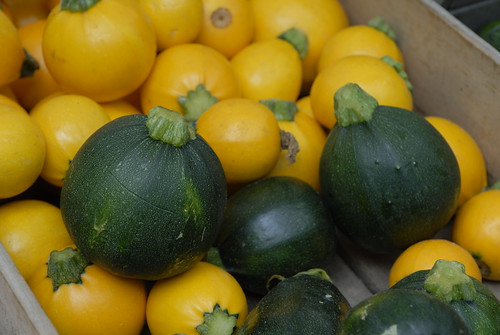Gallery Talk Focuses on Squashes
Posted in Programs and Events, Science on July 14 2009, by Plant Talk
 The edible squashes have been a staple food in the Western Hemisphere for more than 5,000 years. The Aztecs and Mayas, as well as the Native Americans who met the Pilgrims, depended upon the squashes as one of the “three sisters” (corn, beans, squash) of early agriculture in the Americas.
The edible squashes have been a staple food in the Western Hemisphere for more than 5,000 years. The Aztecs and Mayas, as well as the Native Americans who met the Pilgrims, depended upon the squashes as one of the “three sisters” (corn, beans, squash) of early agriculture in the Americas.
Though squashes come in an amazing variety—from tender summer zucchini to hearty acorn squash and pumpkins—their great diversity comprises only five species: Cucurbita argyrosperma, Cucurbita ficifolia, Cucurbita maxima, Cucurbita moschata, and Cucurbita pepo. (Bottle gourds, thought by Swedish botanist Carl Linnaeus to belong to Cucurbita, are now placed in a separate genus, Lagenaria. They are useful for a variety of utensils and handicrafts, although not as good for eating.)
The domesticated species of Cucurbita were all derived from different wild ancestors—wild species that have survived droughts, pests, and diseases without care from people. Although the wild ancestors bear small, hard, bitter fruits, they are very valuable for breeding disease resistance into modern food plants.
Thomas Andres, co-founder of The Cucurbit Network and an Honorary Research Associate at the Botanical Garden, has worked for 30 years with Garden scientist Michael Nee, Ph.D., on squash research. Andres will present a Gallery Talk in the Britton Science Rotunda and Gallery on Friday, July 17, at 2 p.m. about his beloved topic. Following his talk is a behind-the-scenes tour of the William and Lynda Steere Herbarium to see how scientists identify and classify plants and to view some specimens of squashes and their relatives.
Space is limited, please call 718-817-8703 for reservations.

